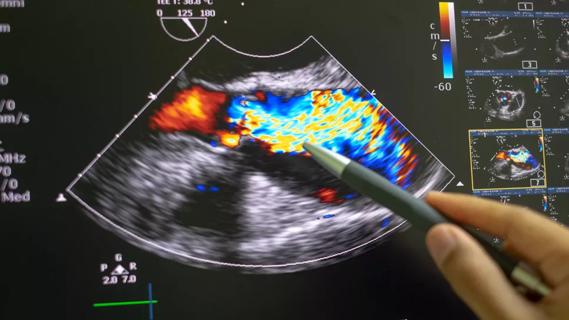By Elliott C. Dasenbrook, MD, MHS
Cleveland Clinic is a non-profit academic medical center. Advertising on our site helps support our mission. We do not endorse non-Cleveland Clinic products or services. Policy
Methicillin-resistant Staphylococcus aureus (MRSA) increases the risk of death for people with cystic fibrosis (CF). Studies reveal a dramatic increase in the number of individuals with CF living with MRSA infection, now comprising 25 percent of the CF population in the United States. These findings have led to active research by my group and others, as well as enhanced infection control practices to minimize transmission and optimize CF patient outcomes.
Our research team led a large registry study that tracked nearly 20,000 patients with CF in the U.S. Cystic Fibrosis Patient Registry between 1996 and 2006, with follow-up through 2008. Our findings have been key in enhancing Cleveland Clinic’s response to the MRSA threat.
A total of 5,759 individuals had respiratory tract MRSA detected, and we found that MRSA increases the risk of death for patients with CF approximately 1.3 times compared with CF patients who don’t develop MRSA. For those CF patients who developed MRSA, the unadjusted mortality rate per 1,000 patient years was 27.7 deaths, nearly double that of CF patients without MRSA, at 18.3 deaths per 1,000 patient years.
This study underscores that MRSA is an especially ubiquitous pathogen in patients with CF, that risk factors need to be evaluated, and that strict infection control practices must be in place to prevent MRSA, minimize transmission and optimize CF patient outcomes.
In April 2017, we published a ten-year patient registry analysis of risk factors for persistent MRSA in patients with CF. Notably, we could find no easily modifiable risk factors. However, we did identify factors that contribute to a higher risk for persistent MRSA that can inform our infection prevention and control protocols.
Adoption and dissemination of rigorous infection control practices are key to reducing transmission of MRSA and optimizing outcomes, especially for patients with CF whose lung function is already compromised. When patients with CF present to Cleveland Clinic for ambulatory visits, we utilize robust infection control practices, including immediately placing the patient in a sterilized clinic room where vital signs and spirometry are obtained and the entire visit is conducted. When CF patients present to our emergency department, radiology department or other hospital sites, an alert in the electronic medical record notifies the provider that special infection control precautions must be implemented.
Several teams at Cleveland Clinic are leading research on MRSA for CF patients. As part of this effort, I designed and implemented a clinical trial testing the use of nebulized vancomycin for treating CF patients with persistent MRSA. The results were presented at the 2017 North American Cystic Fibrosis Conference and showed that while inhaled vancomycin did suppress MRSA infection, chronic MRSA infection cannot be eradicated despite a comprehensive treatment protocol. This underscores the importance of infection prevention and control to prevent patients from obtaining MRSA infection in the first place.
Our expertise in treatment and infection control protocols for MRSA infections in CF patients continues to grow and evolve as we seek to address this dangerous risk.
Dr. Dasenbrook directs Cleveland Clinic’s Adult Cystic Fibrosis Program, recently accredited by the U.S. Cystic Fibrosis Foundation.

A review of conservative, pressure-based and surgical treatments for OSA

Volatile organic compounds have potential in heart failure diagnostics

Insights for diagnosing, assessing and treating

Two NIH grants are looking at developing new antidotes against fentanyl overdose

Exploring the responses to medications and other supportive therapies

A set of graphs helps quantify the expected changes in forced expiratory volume at one second (FEV1), forced vital capacity (FVC) and FEV1/FVC ratio with the new race-neutral equation

Because of the associated symptoms, a multidisciplinary approach to care is essential

Patients with COPD are often affected by sarcopenia, but the underlying mechanisms for the development are poorly understood. New research looks into the causes and potential therapies